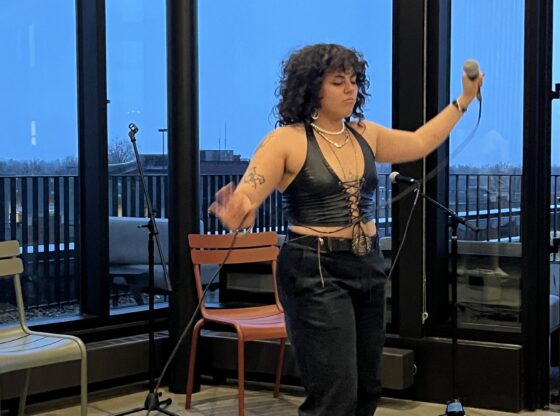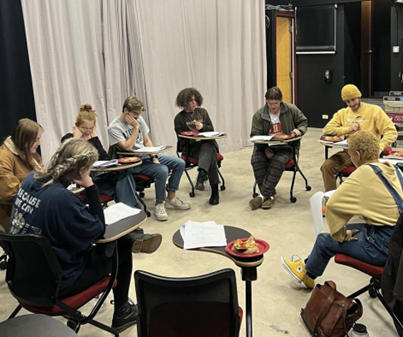It is a commonly known fact that the first rule of Fight Club is to not talk about Fight Club. Luckily, there will be no rule-breaking of this manner today. The novel “Invisible Monsters” does not carry such harsh stipulations despite the fact that it is also authored by Chuck Palahnuik. However, it lives in a similar vein to “Fight Club” with a twisted storyline, familiar narrator and constant questions.
The cover art for this book begins messing with the mind before you’ve even had the chance to open it. The front cover displays a simple black outlined drawing of what appears to be a woman’s head and face with bountiful hair and a crown of sorts. She has paint splatter across the bottom half of her face, effectively covering her mouth. The back cover displays the same drawing, only slightly changed. The paint splatter is gone, and the drawing outline has been flipped upside down to now resemble a different, less attractive face—almost like that of a clown with a large nose and hair piled on top of the head. Without turning a page, the reader is already drawn into the mystery of what and whom the face or faces belong to, and what the story is behind such a person.
The story opens with a fantastical scene: three women, dressed to the nines and entangled in a web of drama. One of them, Evie, holds a rifle that she has just fired, causing one of the other women, Brandy, to collapse and begin bleeding from the bullet wound, while the third woman stands frozen as a silent witness.
The reader is only immersed in this scene for a moment before the story takes a major turn and begins to literally jump around the life of the silent woman, whose name isn’t revealed yet. The reader is flung between images of a childhood home, a brother with AIDS, a police detective and a fancy hotel room with brandy. The reader is given snapshots of the life of the silent woman, clues to the larger plot without the benefit of chronological order or organization.
Palahniuk’s writing clearly depicts the torture happening inside the silent woman’s head, as the story is told through her mindset and view of the world. The reader understands that the woman lives behind a veil, though it is unclear if this is literal or metaphoric, rendered mute and disfigured from a terrible car accident.
The jumping tactic that Palahniuk employs works as a puzzle piece supplier, never quite giving the whole narrative, but still manipulating the clues to allow them to connect through obvious gaps in time and space.
One of Palahniuk’s story-crafting strengths is his unique writing style that alters with every novel. Though the styles change depending on the purpose of the book, the slight edge in the tone and presentation of the story is explicitly Palahniuk, and recognizable to those familiar with his work. His characters are distinctive, his stories are honest and there is a constant feeling of strain that builds in a reserved but intense manner.
Palahniuk has a talent for creating a devious undertone, leaving the reader feeling as if something is being played out in secret. This taunt keeps the mind engaged and trapped within the web that Palahniuk weaves. Readers dangle in wait for the twist at the very end that manages to change everything about the story that just unfurled, and it is never a disappointment.
“Invisible Monsters” is intriguing and dynamic, so that right when it feels as if everything finally makes sense, it gets turned upside down, inside out and suddenly it’s over. Palahniuk knows how to manipulate his readers, and as readers, it is enjoyable to be manipulated.











